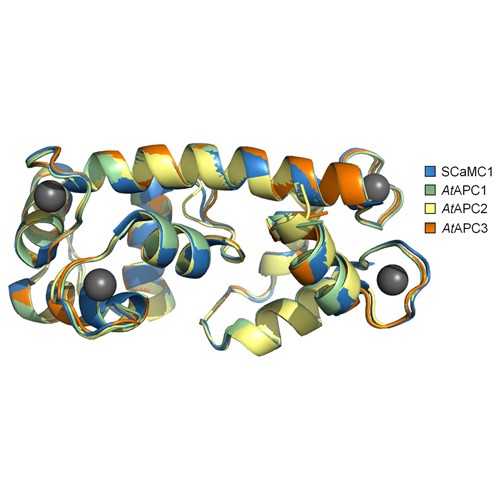In vitro analyses of mitochondrial ATP/phosphate carriers from Arabidopsis thaliana revealed unexpected Ca2+-effects
06-Oct-2015
BMC Plant Biology, 15:238, doi:10.1186/s12870-015-0616-0
Background: Adenine nucleotide/phosphate carriers (APCs) from mammals and yeast are commonly known to adapt the mitochondrial adenine nucleotide pool in accordance to cellular demands. They catalyze adenine nucleotide - particularly ATP-Mg - and phosphate exchange and their activity is regulated by calcium. Our current knowledge about corresponding proteins from plants is comparably limited. Recently, the three putative APCs from Arabidopsis thaliana were shown to restore the specific growth phenotype of APC yeast loss-of-function mutants and to interact with calcium via their N-terminal EF-hand motifs in vitro. In this study, we performed biochemical characterization of all three APC isoforms from A. thaliana to gain further insights into their functional properties.
Results: Recombinant plant APCs were functionally reconstituted into liposomes and their biochemical characteristics were determined by transport measurements using radiolabeled substrates. All three plant APCs were capable of ATP, ADP and phosphate exchange, however, high preference for ATP-Mg, as shown for orthologous carriers, was not detectable. By contrast, the obtained data suggest that in the liposomal system the plant APCs rather favor ATP-Ca as substrate. Moreover, investigation of a representative mutant APC protein revealed that the observed calcium effects on ATP transport did not primarily/essentially involve Ca 2+ -binding to the EF-hand motifs in the N-terminal domain of the carrier.
Conclusion: Biochemical characteristics suggest that plant APCs can mediate net transport of adenine nucleotides and hence, like their pendants from animals and yeast, might be involved in the alteration of the mitochondrial adenine nucleotide pool. Although, ATP-Ca was identified as an apparent import substrate of plant APCs in vitro it is arguable whether ATP-Ca formation and thus the corresponding transport can take place in vivo.











